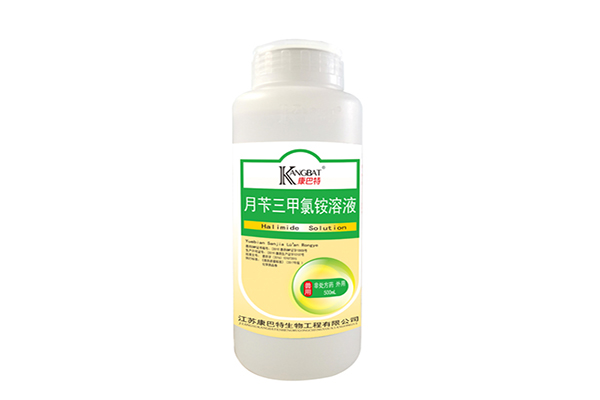With the rapid development of large-scale aquatic product breeding in my country, aquatic diseases often occur. In addition to the use of oral drugs for treatment, disinfectants are widely used to eliminate harmful microorganisms in the aquatic environment and improve the survival of aquatic organisms. condition. In the current season, many ponds have to be cleaned or disinfected during the Qingming Festival. How to choose disinfectant products correctly? Next, the aquaculture disinfectant manufacturers will introduce to you.
The key to common disinfectants are halogen bulbs, phenolic resin aldehydes, strong acids and bases, salts, quaternary ammonium salts, and Chinese herbal medicines.

1. Halogen disinfectant
Contains effective chlorine disinfectant, bromine-containing disinfectant and iodine-containing disinfectant, etc. Commonly include chlorine dioxide, bleach, strong chlorine essence, bromochlorohydantoin, povidone-iodine, compound iodine, etc. The key According to the effect on the bacterial membrane surface, cell nucleus or destruction of internal enzymatic reactions, the bacteria will die, so as to achieve the purpose of disinfection.
2. Phenol, aldehyde, alcohol disinfectant
For example, compound phenol, isopropyl, glutaraldehyde, etc., the key is to hydrolyze bacterial protein to achieve disinfection and sterilization purposes.
3. Acid, alkali, salt
Erythorbic acid: Sodium citrate, glacial acetic acid, benzoic acid, sodium hypochlorite solution, etc. can transform, settle or dissolve bacterial proteins, and have practical effects on eliminating various bacteria and bacteria.
Alkali: calcium hydroxide (quicklime powder), ammonium hydroxide aqueous solution (sodium hydroxide) are common. Calcium hydroxide is mixed with water to transform into sodium carbonate, and releases a lot of heat, which can quickly melt the bacterial protein film, making it lack of charm, and then kill pathogenic bacteria in the pool and hostile microorganisms remaining in the pool. Because of its high quality and low price, many are used for cleaning ponds and disease prevention.
Salts: including basic salts such as aluminum sulfate and sodium bisulfate, potassium permanganate solution, sodium thiosulfate and other heavy metal over-standard salts and quaternary ammonium salts. The hydrophobic functional group in the molecular formula of the quaternary ammonium salt can penetrate into the cytoplasmic membrane and protein layer of the bacteria, causing changes in the permeability of the bacteria and the leakage of somatic cell contents and death.
4. Peroxides
Peracetic acid, hydrogen peroxide, calcium peroxide, ozone, etc. Possess strong air oxidation ability, release new green ecological oxygen when encountering organic compounds, and the air oxidizes specific functional groups of bacteria. This kind of disinfectant has strong sterilization ability, can dissolve strong electrolyte, dissolve in water to cause oxygen, and can also be used as an oxygenator.
5. Chinese herbal medicine
The use of Chinese herbal medicines for disinfection and sterilization has received more and more attention from everyone. Many Chinese herbal medicines have slowly entered the aquatic product disinfectant sales market with their excellent effects, high quality and low price, rich resources, and poor side effects. The common ones are garlic, cigarettes, coptis, Bupleurum, cypress, bitter remonstrance, gallnut, coptis, maple leaves, camphor leaves, plantain, chrysanthemum, pueraria, nuclear deciduous, etc.